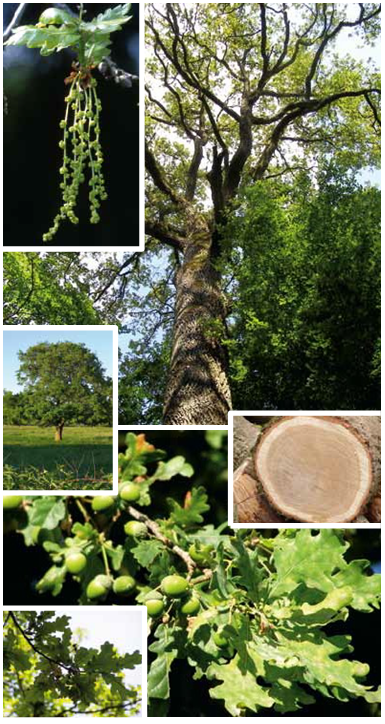Quercus robur

Quercus robur
English Oak
Stieleiche
Chêne anglais, Chêne pédonculé
Eechefrächen, Summereech
Size:
The English oak is a mighty large tree up to 30 m tall with a broad, light crown.
Leaf:
The leaves are elongated, ovate and irregularly lobed on a very short stem. The "little ears" at the base of the leaf are typical. The leaves sprout late in spring and can sometimes remain on the tree over winter.
Flower/fruit:
The flower is inconspicuous. The fruits - the acorns - are attached in groups to a stalk up to 10 cm long (name!). They are good game food, in former times also for domestic animals (pig fattening).
Wood:
The English oak is one of the best European timber species. The wood is strong, hard, elastic and durable even under water. It is highly valued in the furniture and parquet industries, but is also used in shipbuilding and in outdoor applications (railway sleepers, barrels, etc.).
Trivia/Use:
With increasing age, English oaks become particularly imposing specimen trees in the open landscape as well as in parks. They can become over 800 years old. In the forest, they are the most important tree species next to the beech. It needs relatively much light and nutrient-rich clay soils.



